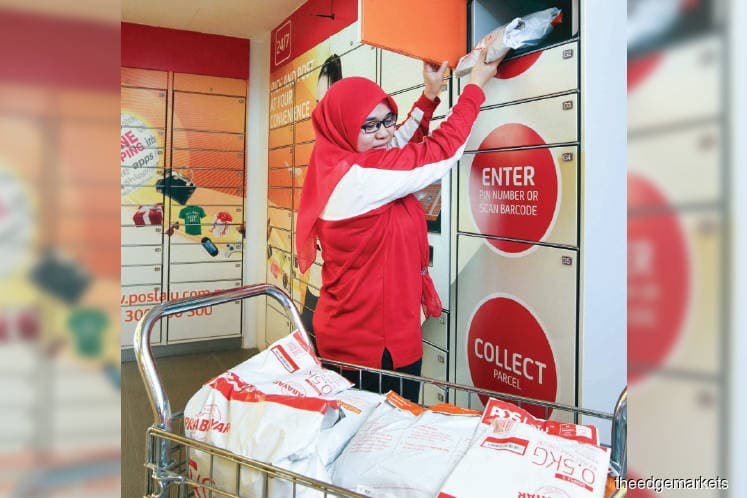
This article first appeared in The Edge Malaysia Weekly on July 22, 2019 - July 28, 2019
THE huge size of Pos Malaysia Bhd’s workforce is an unmistakable structural challenge underlying its persistently high universal service obligation (USO) costs. Of its 23,000 staff today, 19,000 are in the postal and courier service segments.
Also worth noting is that 12,000 of these belong to seven union groups. A postman’s basic pay starts at RM1,200 per month and rises to no more than RM2,000 to RM3,000 with allowances and overtime. So, most of the 12,000 are in the B40 group, says group CEO Syed Md Najib Syed Md Noor.
Clearly, carefully managing this aspect of the company is critical to any turnaround plan. Thus, the question arising from Pos Malaysia’s quest for more automation and efficiency is whether there will be an impact on jobs.
It is worth noting that as recently as two years ago, the then-management sat down with the unions to find ways to cut its workforce and realign staff compensation to be more performance-driven.
In the 2019 financial year ended March 31 (FY2019), Pos Malaysia acknowledged in a presentation to investors that, among other factors, salary increases due to collective agreements had contributed to its losses.
In response, Syed Md Najib says he does not foresee job losses in the postman and delivery segments. He expects they will become more efficient and productive once the right tools and systems are in place to drive more volume.
“It may seem to be a burden because you have so many people, but most of them are on the ground, doing the deliveries. The question is, what is the price point, how do we leverage all the people we have?”
So, what is it like to run a company with so many unions? The CEO says he does not find it a problem as he sees it as a matter of engagement.
“At the end of the day, these are the people driving that last mile for Pos Malaysia. We work very closely [with them] and there has been some good feedback, too, as the union heads know the business well.”
Pos Malaysia is also exploring an innovation that may help postmen improve their livelihoods while managing the company’s costs.
For the past two months, the company has been conducting a proof-of-concept (POC) in Wangsa Maju for a crowd-sourced, commission-based courier delivery service. The idea is that postmen who are idle after finishing their mail delivery commitments can then do parcel deliveries. Thirteen participants are engaged via a proprietary app in delivering Pos Malaysia’s parcels. They get a commission for each successful delivery at the first attempt, which incentivises efficiency.
So far, they have averaged 80 to 100 deliveries daily and earn over RM1,000 a week. The POC trial will last for three to six months before it is tried out with actual postmen.
“Once we are successful with this POC, the model that we are looking at now is a hybrid between fixed-income plus variable. The opportunity as we expand is that we may have a lot more variable costs than fixed,” he adds.
But Pos Malaysia will need to study the 4,000 existing routes and delivery volume patterns to work out a fair commission structure and identify where the model can work before full implementation, he cautions.
One issue flagged by some analysts is that its postmen are increasingly taking up part-time work for other delivery services, sometimes leaving permanently. Social media is rife with pictures of postmen moonlighting for other courier services outside of their working hours to supplement their income, sometimes still wearing the Pos Malaysia uniform.
But will the 8,000-odd postmen look favourably on the innovation? Syed Md Najib says engagement has begun and stresses that it is a positive prospect for them.
“There is an upside opportunity for them because, potentially, they can have their fixed income as well as their variable income,” he says.
Save by subscribing to us for your print and/or digital copy.
P/S: The Edge is also available on Apple's AppStore and Androids' Google Play.